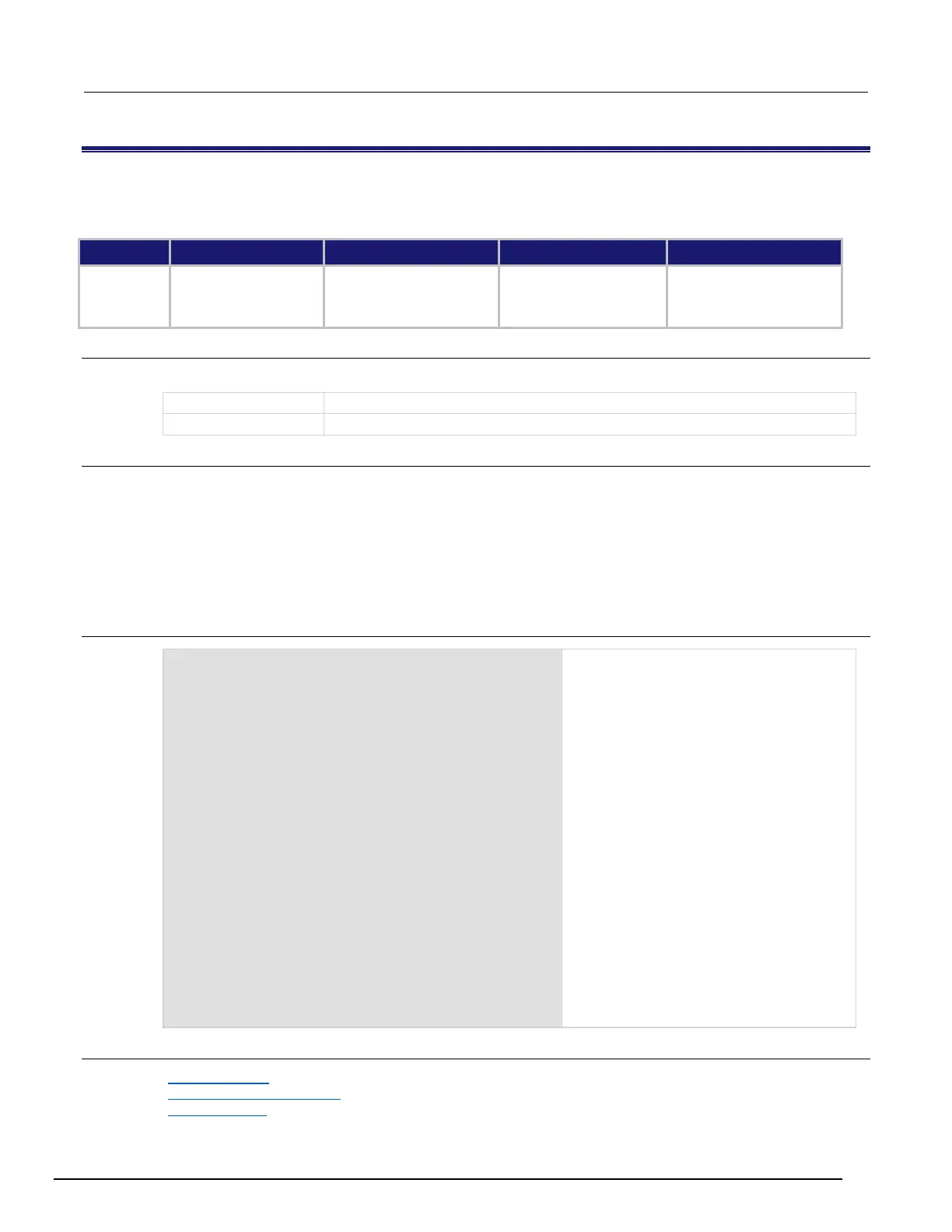Series 3700A System Switch/Multimeter Reference Manual Section 11: TSP command reference
3700AS-901-01 Rev. D/June 2018 11-25
bufferVar.dates
When enabled by the bufferVar.collecttimestamps attribute, this attribute contains the dates (month, day,
and year) of readings stored in the reading buffer.
Buffer storage settings
Clearing the buffer
Instrument reset
Recall setup
USB flash drive using
dmm.savebuffer or
dmm.appendbuffer
Usage
dates = bufferVar.dates[N]
The reading number (1 to bufferVar.n)
Details
The bufferVar.dates information from a reading buffer is only available if the
bufferVar.collecttimestamps attribute is set to 1 (default setting). If it is set to 0, you cannot
access any time information from a reading buffer. You may change the collect timestamps setting
when the buffer is empty (bufferVar.clear()).
This read-only attribute is an array (a Lua table) of strings indicating the date of the reading, formatted
in month, day, and year format.
Example
reset()
testData = dmm.makebuffer(1000)
testData.collecttimestamps = 1
dmm.nplc = 0.5
dmm.range = 0
dmm.configure.set("Dcv_100mV")
dmm.setconfig("slot2", "Dcv_100mV")
scan.create("2035:2040")
scan.execute(testData)
print(testData.dates[1])
printbuffer(1, 6, testData.dates)
This example creates a reading buffer named
testData, configures the buffer to collect
time and date data, sets and saves the DMM
configuration, creates a scan list, and then
runs the scan.
The print() command then outputs the first
measurement date.
Output:
07/11/2011
The printbuffer() command then outputs
the dates for measurements 1 to 6 in the
reading buffer.
Output:
07/11/2011, 07/11/2011,
07/11/2011, 07/11/2011,
07/11/2011, 07/11/2011
Also see
bufferVar.clear() (on page 11-21)
bufferVar.collecttimestamps (on page 11-24)
Reading buffers (on page 6-7, on page 6-1)

